Y-12 Blog
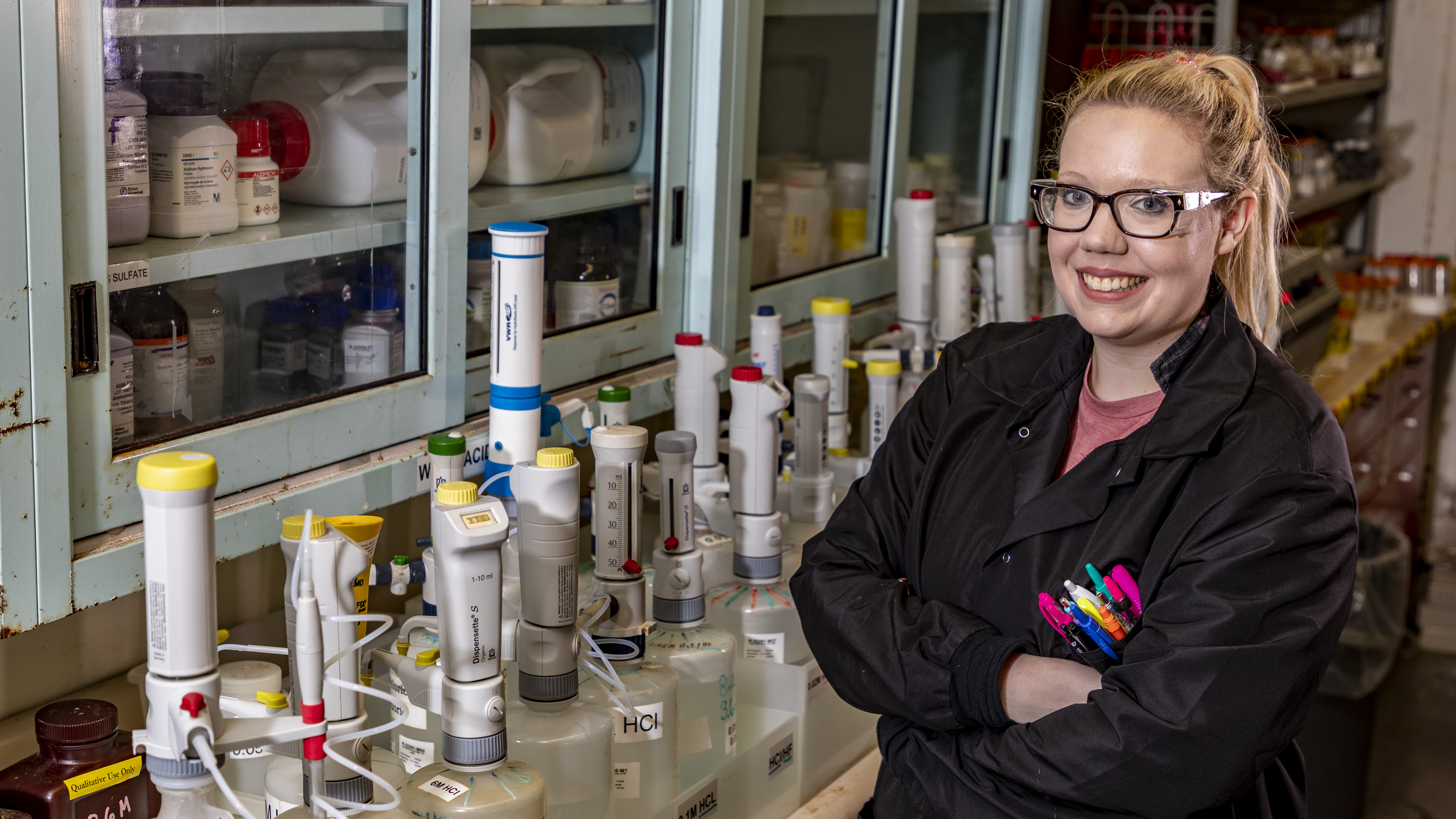
Courtney Edenfield contributes to the mission as a technician in Analytical Chemistry Mission Operations at Y-12.
Take 5 minutes and learn about Courtney Edenfield, an Analytical Chemistry technician at Y-12. All views and opinions are the employee’s own and do not necessarily reflect those of CNS.
One might say Courtney Edenfield was needled into her career path as a teen.
“I was going to go into medicine, but I have a huge fear of needles,” Edenfield said. “I remember going to a doctor’s appointment with my mom. She was having fluid drawn from her knee, and I passed out — so I had to go into something else.”
Edenfield injected herself into chemistry instead. After graduating in 2020 from the University of Tennessee with a bachelor’s degree in interdisciplinary programs with a concentration in neuroscience, she joined Analytical Chemistry Mission Operations as a technician in the radiochemistry lab at Y-12. Edenfield manages the sample flow and performs a wide spectrum of analysis, which supports a number of Y-12 programs.
“I really like it,” she said. “It can be really challenging working with all the different chemicals. You have to be super accurate.”
In the job, “I get samples and prepare them using several different procedures,” Edenfield said. “They’re analyzed on specialized instrumentation. We examine uranium and look for transuranic activity, which is basically the presence of isotopes that have a higher atomic number than uranium.” This includes elements such as neptunium, plutonium, and americium.
Working at Y-12 and supporting its mission runs in Edenfield’s family. Her father, Tommy Keylon, has been with the company 44 years. He is a tube assembler and makes filaments that are used on the instruments in the isotopic lab, just a few doors down from his daughter’s lab.
“I get to walk up and down the same hallways that he has been walking since before I was born,” Edenfield said. Her grandfather, Gordon Sutton, also worked at Y-12 during his career, which was mostly spent at K-25 in the barrier manufacturing plant as a production control manager.
When Edenfield isn’t in the lab, she analyzes fashionable looks in the Pop of Color Closet, her 4-year-old online consignment clothing store she started while attending UT.
“I love fashion and all the fun girly things,” she said. “The store has a lot of bright clothes, like Lilly Pulitzer pieces. I have many out-of-state customers from places like South Carolina and Florida. It’s really busy from January to August. This time of the year, people are preparing their spring and summer wardrobes.”
Although the store consumes much of Edenfield’s spare time, she enjoys it and has designs to expand.
“It’s turned out to be a pretty cool side business,” she said. “I would love to make it a full-on boutique, still online, but with a larger presence.”
As an employee, how do you want to be remembered?
I hope people would remember me as someone who was very approachable, someone they could talk to or ask a question. Even if I sometimes didn’t know the answer, I would help them find it.
What is your favorite aspect about your work environment? How does that aspect make you know the mission is being met?
It would have to be the teamwork culture. We have a great team and work really well together. This allows us to be successful. We all have our responsibilities, and we hold each other accountable. We get the job done and help the customers meet the mission.
What advice would you give someone who is new to Pantex or Y-12?
Take in all of the experiences that you are given and capitalize on any opportunity that comes your way. Be ready to work hard and be open to try new things, and you will go far.
What’s your top bucket list item and why?
My husband and I have always wanted to go to Europe on a 2- or 3-week trip. France, Italy, and Greece are on the top of the list of the places we want to visit. This would be amazing, since I have never been out of the country.
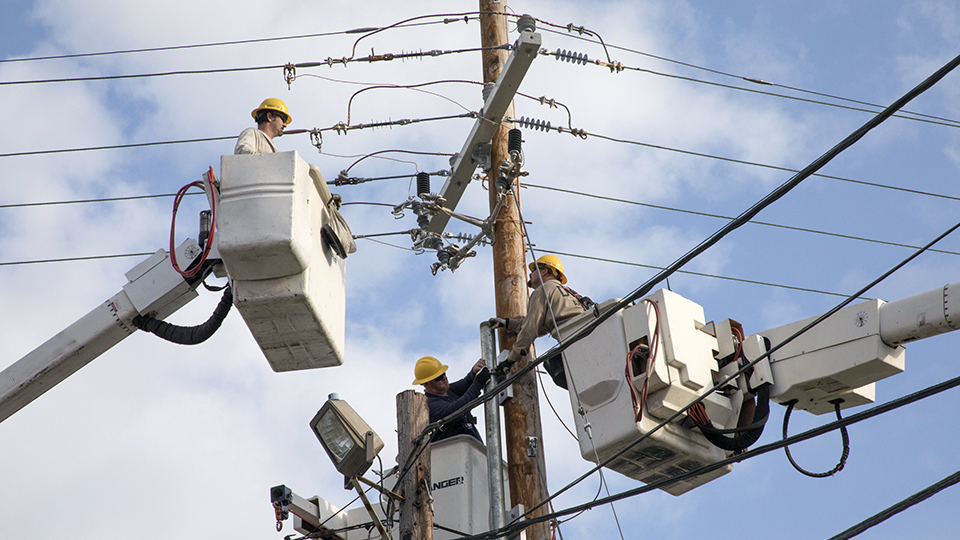
Utilities technicians are part of the Y-12 Infrastructure labor force, with the majority performing hands on work.
It is safe to say that working 1 million hours without a recordable injury is a big deal, especially when an organization’s work is physical and happens “in the elements.”
Y 12 Infrastructure achieved this during a recent 6 month span. The organization has six departments with 1,200 employees, with more than 60% of them performing hands on work daily. Departments include Waste Management, Utilities Management, Asset Management and Reliability Execution, Facilities and Sustainability, Plant Services, and Mission Systems and Integration. The organization executes 2.2 million work hours annually.
“When you look at all of the hands-on work we do, that’s why this is such a significant accomplishment,” said Y-12 Infrastructure Senior Director Andy Huff. “There are many opportunities to be in harm’s way or in a high risk situation. We work in every production facility and all over the Y-12 site.”
One of the ways Infrastructure has gotten ahead of injuries is to routinely evaluate equipment used to do work around the site.
“We regularly have events during the year when vendors bring in new equipment,” Huff said. “It’s important to make sure our tools and equipment are in good condition. If something isn’t, replace it.” Also part of the safety success story are crew briefings that emphasize looking out for coworkers, the stop or pause work philosophy, and exercising a questioning attitude.
When a college or professional sports team wins a championship, usually there is a celebration with much fanfare to commemorate the feat. Huff chose a different way to mark the milestone.
“I didn’t want to treat it like we have arrived at a destination. Being safe is part of what we have to do. I want to celebrate every day that we helped prevent someone from getting injured.”
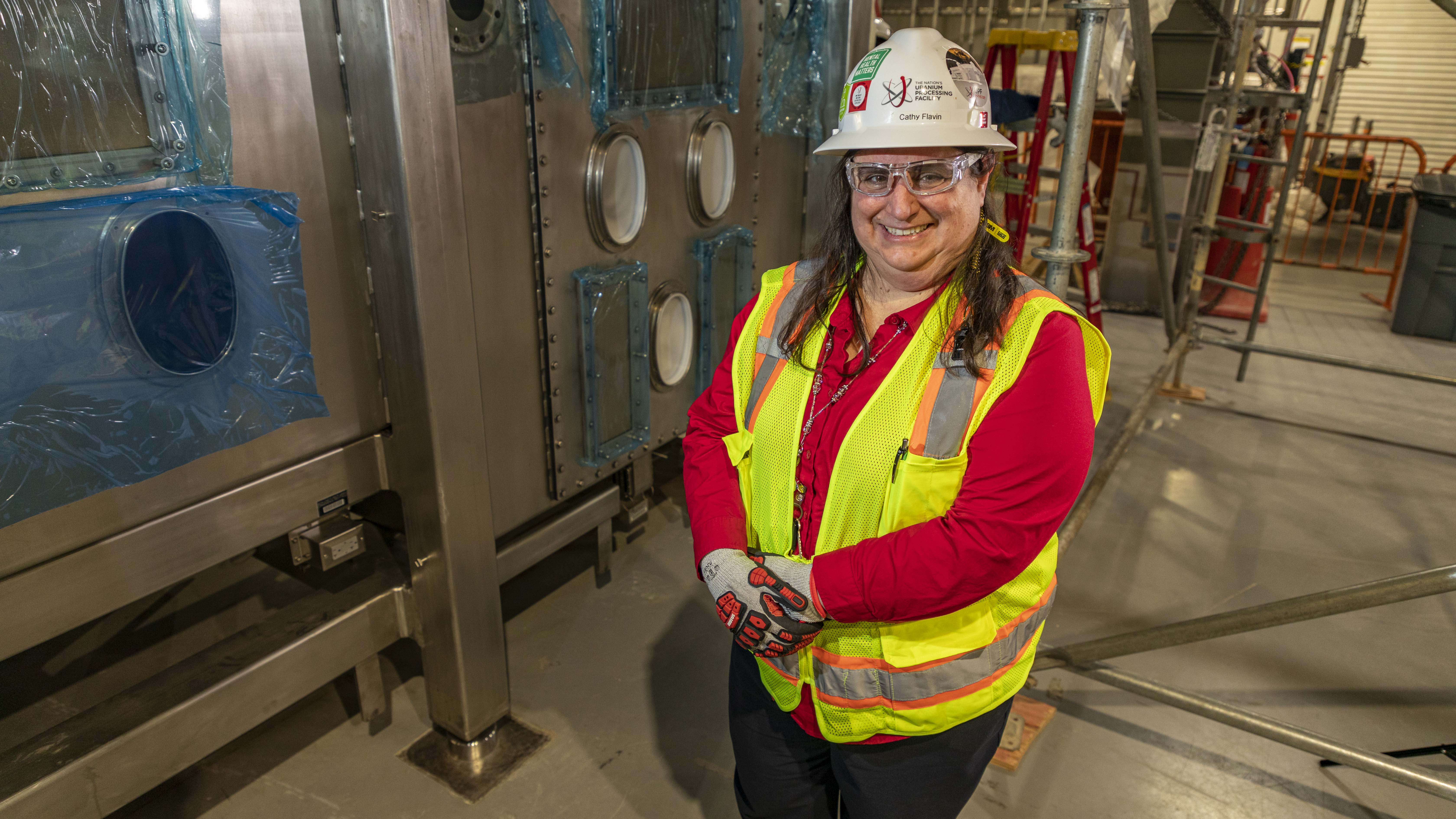
Taking a first-of-a-kind facility from design through major construction milestones is something many engineers dream of doing. For Cathy Flavin, Uranium Processing Facility (UPF) CNS deputy project director, it has been her reality. Flavin joined the project 9 years ago, working on the initial planning and design for the multi-facility concept. She had worked a year for another Bechtel project in the United Kingdom before moving to East Tennessee during the CNS contract transition when a project engineering manager was needed for UPF.
As UPF CNS deputy project director, Flavin focuses on the project’s relationships with Y-12 and NNSA, primarily the Y-12 Acquisition and Project Management Office. With each of the area project managers for the Main Process Building, Salvage and Accountability Building, and Process Support Facilities subprojects reporting to her, Flavin manages overall project performance and the escalation of issues. She provides leadership for planning and reporting, as well as guidance for implementing process improvements.
Flavin’s professional journey into engineering began at Michigan State University, when she entered as an undeclared engineering major. She knew she wanted to pursue a career in science and math, and she eventually chose electrical engineering as her focus. After graduating, her first job was working at the Savannah River Site and, from that point on, most of her career has focused on executing projects for the Department of Energy.
At UPF, many of Flavin’s colleagues endearingly refer to her as the “project historian” because of her deep understanding of the technical requirements and aspects of the site. Flavin believes her knowledge of the project and DOE processes is one of the best things she can bring to the table.
“Because I was the engineering manager during the design process, I am pretty familiar with a wide range of processes and builds happening on-site. One of the things I enjoy most about working at UPF is being able to see the renderings and designs on paper actually transformed into this history-making facility,” said Flavin. “Being a part of something like this at Y-12, whose mission is one I deeply believe in, has truly been a highlight of my career.”
What is your favorite aspect about your work environment?
Working as a team to solve problems has always been my favorite part of the job. Watching our team come together and rise to the challenge is a big motivator.
What CNS principle drives you to be successful?
All of them really speak to me daily on the project. If I had to choose, I would say setting high standards and having a questioning attitude. It’s important to challenge the status quo and make sure we do the right thing for the right reasons. Those are pillars of success that have been engrained in me throughout my career; we want to make sure we do our jobs right the first time as engineers. It doesn’t do any good if we build the building or facility but then it can’t be used by the workforce.
As an employee, what do you want to be remembered for?
I want to be remembered for being helpful and trustworthy — someone who others can depend on. On a lighter note, I want to be remembered for helping people laugh. On a project before UPF, I was told by a colleague that I could always be found on the site just by listening for my laugh. What we do is serious work, but it’s important we also look on the positive side, and humor can be the best way to maintain positive energy. It’s important to me to be a great person to work for and work with.
What work advice would you offer someone who is new to Y-12 or UPF?
Read the procedures.
Just kidding. Well, still do that. My biggest piece of advice is to find someone you look up to and ask that person to be your mentor, and when you gain experience, mentor other people.
If you could have any super power, what would it be?
Definitely teleportation, because I could pop all over the world without the headache of traveling. I would travel first to see my kids and family all over the country. A lot of people don’t know I have four kids who all have their own careers. I would probably go to Los Alamos first, and then Utah, followed by New York and Delaware.
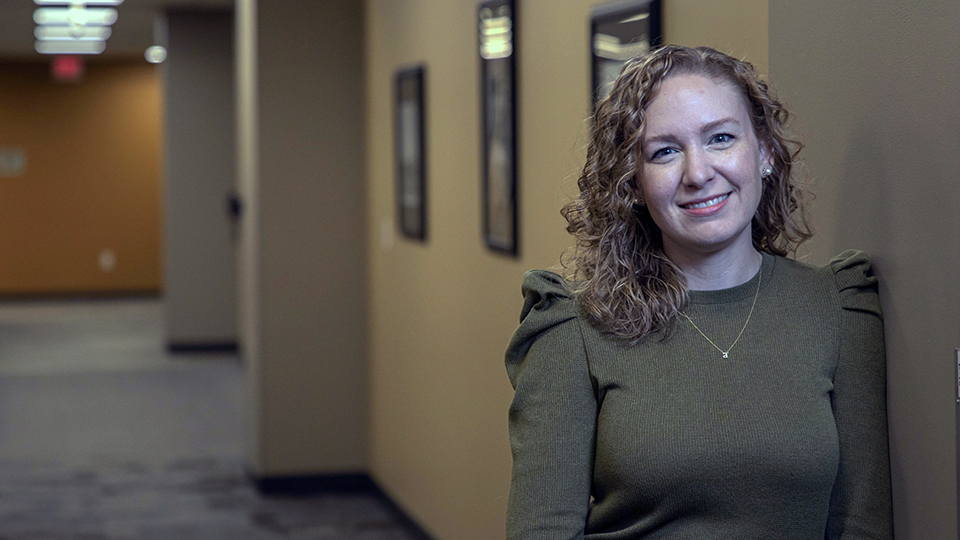
Y-12’s Alicia Swift has been named to the 2023 University of Tennessee Volunteer 40 under 40 Class.
Swift is director of Nonproliferation and Arms Control at Consolidated Nuclear Security. She joins an elite class of young professionals who have excelled since completing their degrees at UT Knoxville.
Swift received her Ph.D. in nuclear engineering from UTK in 2016.
“I am honored to have been nominated by CNS and then ultimately selected for the award,” Swift said. “I am proud to represent CNS as part of the 2023 class. I think this is indicative of the important work we all do in support of the mission and the nation.”
This latest recognition should not surprise anyone. Her relatively short career is already filled with superlatives. From 2012 to 2013, she served as a nonproliferation graduate fellow within the National Nuclear Security Administration’s Office of Global Threat Reduction.
She is past chair of the Nuclear Nonproliferation Policy Division of the American Nuclear Society and an associate editor of the Journal of Nuclear Materials Management. She currently serves on the board of directors for the American Museum of Science and Energy.
Swift, who grew up in West Palm Beach, Florida, says she owes her love of science to a high school physics teacher, Mr. Murray. Swift said he made physics extremely accessible and fun.
“He was always bringing in exciting topics for us to study, like black holes and astrophysics,” she said.
He also made the class challenging.
“Physics requires thinking outside the box and a different mindset,” Swift said. “I think I also liked the expansive nature of thinking about things in new ways. A big cause of personal growth is choosing things that are difficult and not being afraid to fail or ask for help,” she added.
“Ultimately my love of science stems from the ability to help others and society and to discover new frontiers,” Swift said.
The 2023 class was honored at a ceremony at the University of Tennessee, Knoxville, earlier this month. She was excited that her parents and sister were there to share the moment.

A poster produced in the 1990s paid tribute to the Seawolf submarine.
The removal of a big machine at Y-12’s Alpha-1 facility is a big deal.
A large mill used to produce the first propulsor for the legendary Seawolf submarine has been dismantled. It took three years for Y-12 to build the propulsor, but only a few months to take down the machine used for the project.
In 1989, the U.S. Navy launched a plan to build the propulsor for the then new Seawolf. The propulsor is the device used to propel a marine vessel, which includes the propellers, water jets, and other components. The part was needed to make the fast sub quieter. For decades, attack submarines had reputations for being either fast or quiet, but never both. Fast subs could be heard by adversaries who were considerable distances away. The Seawolf task needed specific expertise and scheduling requirements, as well as advanced materials and technologies.
Making connections
“Through a connection at ORNL (Oak Ridge National Laboratory), the Navy found out about us,” said Y-12 Uranium Transformation Director John Gertsen, who was part of the propulsor team. “The Navy had to find the right kind of shop for extensive and complex machining and fabrication. ORNL said, ‘We can introduce you to Y-12.’”
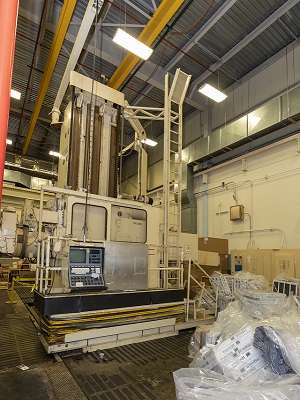
This five-axis mill has been dismantled at Alpha-1. The machine was instrumental in the production of a propulsor for the first Seawolf submarine.
The Navy explored other possible contractors, but “they knew we were capable of doing it,” Gertsen said. “Other vendors couldn’t do it, wouldn’t do it, or they wanted the Navy to build a new factory for it. The Navy came back to us.” Y-12 began work on the propulsor in 1990.
Although Y-12 had most of the equipment to build the part, the plant still needed additional machinery. This included a special five-axis, computer-controlled milling machine and a lathe. The milling machine was used to create complex shapes for the propulsor, while the lathe fashioned rings for the propulsor.
“We were given DX (a rating assigned to programs of the highest national importance) priority to get the next one coming out of the factory,” Gertsen recalled. “They told the other customer, ‘Yours is going to be late.’”
Big dismantlement with a small crew
Now, a few decades later, the mill was the focus of the recent dismantlement.
“It is a fairly small, eight-person crew that has been working on it,” said Ross Sampson, production support manager at Alpha-1, which was command central for the Seawolf propulsor project. “I’ve been involved in some other dismantlements, but nothing of this capacity.” The $2.3 million endeavor began in early September 2022.
“Despite the size of the machine, we were able to efficiently remove it,” Sampson said. “We had a high-capacity overhead crane and an experienced demolition crew. We were very strategic about how we dismantled this machine, in order to do it safely.”
The milling machine occupied a 5,000 square foot space.
“That is really just a drop in the bucket in terms of space,” Sampson said. “Alpha-1 as a whole is 278,000 square feet. But that is very valuable space.” The mill’s former space has been spoken for and will hold equipment used for special processes.
Massive equipment
The impressive 26-foot vertical turning machine was brought in as the centerpiece of the Alpha-1W wing, which was specifically added for the propulsor project. The lathe was bought used and shipped on a barge from Chattanooga.
“We needed this lathe,” Gertsen said. “It had to be big enough to do the machining on a 20-foot diameter part.” The massive lathe remains.
At one time, an area was dedicated to a large coordinate measuring machine, also purchased for the Seawolf project.
“That was a probe instead of a cutting tool,” Gertsen explained. “You probed the part to measure the surface and specific shapes. Certain shapes were important when it came to noise generation.” Sampson said that machine was removed from Alpha-1 a decade or so ago.
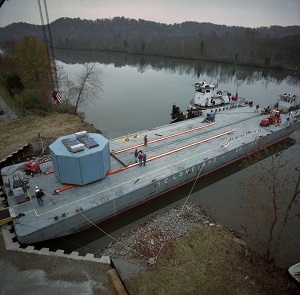
The propulsor was delivered in three subassemblies to submarine-maker General Dynamics in Connecticut, two via waterway. One of the pieces shown here is being loaded onto a barge in 1993..
In 1993, Y-12 completed the propulsor on schedule and within budget. It was divided into three subassemblies and delivered to General Dynamics in Connecticut, which built the Seawolf submarine. One part went by road in an oversize truck, and the other two made the trip via barge, starting from Oak Ridge and using the Tennessee River system. The Seawolf sub was commissioned in 1997.
Y-12 also did the model work and manufacturing design for the test propulsor for the Navy’s Virginia class submarine, made the third subassembly for the second Seawolf class submarine, crafted spare parts for the propulsors, and then transferred the process to a Navy shipyard.
Good for Y-12, the country
Although some of the machines used to help make Seawolf a stealthy vessel are no longer part of Alpha-1, the memories of that time will always ring loud for Gertsen.
“It was kind of like ‘The Hunt for Red October,’ except in that case it was the Soviets coming out with the quiet submarine,” he said. “The project gave us a real sense of accomplishment. People were proud to work on it. It showed us we can do things that are good for us [Y-12] and good for the country.”
